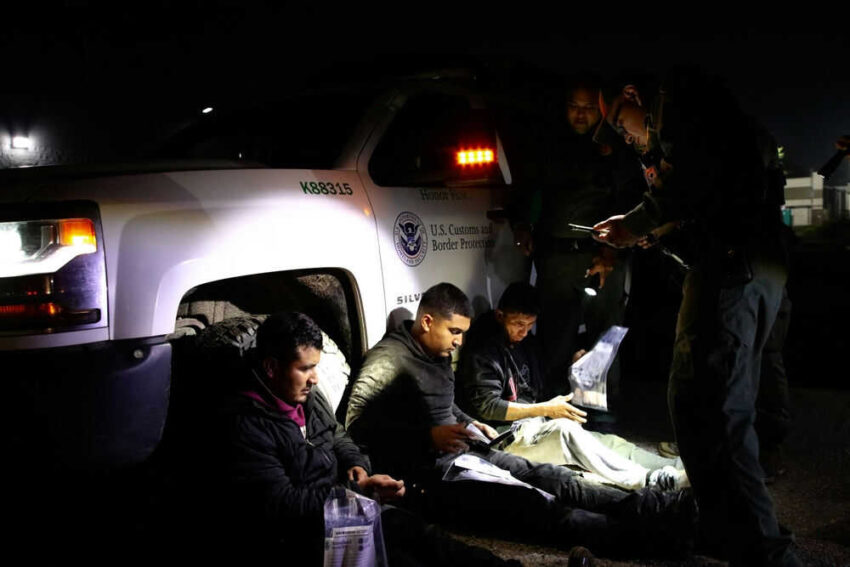(LibertySociety.com) – Federal investigators discovered a criminal blueprint hiding in plain sight, legitimate businesses camouflaging a sprawling web of sex, labor, and drug trafficking, all orchestrated by Indian nationals in Nebraska, Georgia, and Texas.
Story Snapshot
- Federal raids across three states exposed a multi-pronged trafficking ring using real businesses as criminal fronts.
- Indian nationals are at the center of the operation, a demographic rarely spotlighted in U.S. trafficking cases.
- Victims, mostly undocumented migrants, were exploited for sex and labor, with illicit drugs moved alongside.
- Law enforcement faces new challenges as crime syndicates adapt by blending into legitimate commerce.
Federal Raids Reveal Sophisticated Criminal Networks
On August 12, 2025, federal agents stormed locations in Nebraska, Georgia, and Texas, arresting multiple Indian nationals suspected of running a multi-state trafficking enterprise. Authorities allege these suspects used hotels, restaurants, and service businesses to launder money and mask their illegal operations. Surveillance footage, financial records, and whistleblower tips built a case showing how traffickers leveraged the trust and infrastructure of legitimate commerce to orchestrate sex trafficking, forced labor, and drug distribution. The scope and complexity of the operation stunned seasoned investigators, who described the network as highly organized and adaptive.
Labor exploitation and suspicious business practices in Nebraska had already caught the attention of federal and state task forces as early as 2022. By 2024, intelligence sharing among three states revealed connections between outwardly reputable businesses and clusters of trafficking activity. Investigators discovered that traffickers targeted vulnerable Indian migrants, often undocumented or on temporary visas, promising work or education but delivering debt bondage and coercion. The use of legal businesses as criminal shields is not new, but the scale and multi-state reach of this operation marked a troubling evolution in trafficking tactics.
Victims, Traffickers, and the Machinery of Exploitation
Victims identified in the raids included young women forced into sexual exploitation and men trapped in grueling labor, all under threat of violence or deportation. Many had arrived in the U.S. seeking opportunity, only to be ensnared by traffickers exploiting their immigration status. The traffickers, described by law enforcement as calculating and ruthless, maintained control through debt, threats, and manipulation, moving their victims between business locations to evade detection. Law enforcement agencies, from the Department of Homeland Security to local police, coordinated efforts to break the chain of abuse and provide support to survivors. Community organizations and NGOs mobilized quickly, offering shelter, legal counsel, and medical care for those rescued.
Federal prosecutors and judges now face the challenge of untangling financial records, verifying legitimate business claims, and ensuring justice for victims. Advocacy groups urge authorities to focus on victim protection and rehabilitation, warning against conflating trafficking with broader immigration enforcement. The case has sparked debate about the vulnerabilities of immigrant communities and the responsibilities of business owners to vet employees and partners.
Broader Impacts: Industry, Policy, and Public Perception
The immediate aftermath of the raids saw businesses shuttered or under investigation, victims relocated, and suspects in federal custody. Local economies in hospitality, agriculture, and service sectors braced for audits and compliance reviews, fearing both reputational damage and labor shortages. The bust prompted calls for stricter oversight of companies employing migrant labor, with experts highlighting the need for comprehensive immigration reform to reduce the pool of exploitable workers.
Human trafficking experts emphasize that these criminal networks thrive on gaps in regulation and enforcement. Law enforcement analysts point to the effectiveness of financial investigations and inter-agency collaboration in dismantling syndicates. Academic voices, such as Dr. Sanjukta Banerjee of the University of Nebraska, argue that the intersection of restrictive immigration policy and unchecked labor demand creates fertile ground for exploitation. Some business associations express concern about regulatory overreach and the potential for immigrant-owned businesses to be unfairly targeted, while advocacy groups insist that victim protection must remain a central priority.
Aftershocks and the Road Ahead
The Nebraska case is already influencing national conversations about trafficking, immigration, and business regulation. Law enforcement agencies are tightening scrutiny of high-risk sectors and expanding intelligence-sharing protocols. Diplomatic channels with India have opened, as officials seek to address the treatment of nationals abroad and prevent future exploitation. Community organizations report increased demand for victim support services, as awareness of trafficking risks grows among immigrant populations.
As the investigation continues, uncertainties remain: the full extent of the trafficking network, the number of victims, and the fate of those accused. What is clear is that traffickers are becoming more sophisticated, leveraging the legitimacy of American commerce to mask their crimes. For policymakers, business owners, and citizens alike, the Nebraska bust is a stark reminder that vigilance, collaboration, and compassion are essential tools in the fight against modern slavery.
Copyright 2025, LibertySociety.com .
Click this link for the original source of this article.
Author: Editor
This content is courtesy of, and owned and copyrighted by, https://libertysociety.com and its author. This content is made available by use of the public RSS feed offered by the host site and is used for educational purposes only. If you are the author or represent the host site and would like this content removed now and in the future, please contact USSANews.com using the email address in the Contact page found in the website menu.








